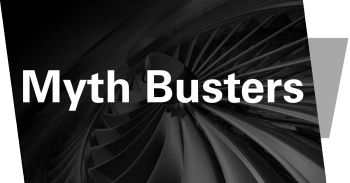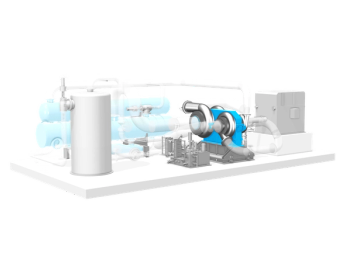
TORSIONAL OSCILLATIONS ARE NO PROBLEM IN CENTRIFUGAL COMPRESSORS
Those of us who have used gas turbines as drivers for compressors have, for many years, thought that the problem of torsional train excitation was well understood and easy to deal with. Even long compressor trains with two or three multi-stage compressors, and possibly including a gearbox, were found to be manageable.
The major method of avoiding operation at torsional critical speeds is the modification of coupling stiffness. Since the excitation was limited to 1x of the running speed, the problem was always solvable.
The components of a compressor train, such as the driver, gearbox, couplings and compressors, all provide a certain level of torsional stiffness, as well as a polar inertia. Therefore, the train has torsional natural frequencies or critical speeds.
If the train gets excited at or near these speeds, torsional vibration amplitudes will increase. Generally, the damping in these torsional systems is relatively low, leading to a high amplification of torsional vibration. Therefore, operation at or near these speeds can lead to high cycle fatigue and possibly major mechanical failures.
Enter electric motor drives, especially variable speed drives (VFDs), but also constant speed machines. VFDs tend to excite additional frequencies that can be above or below running speed, and some drives may even change the frequencies and magnitude they excite depending on the operating mode.
Additionally, both constant and variable speed motors can introduce transient torque spikes into the train if line faults or short circuits occur. Constant speed motors will additionally tax the train with high inrush torques at starting.
It is quite complicated to avoid all critical frequencies along a wide range of operating speeds. If we cannot avoid these torsional excitations, we can learn to deal with them. Since the torsional response is proportional to the damping, we are in desperate need of torsional damping in the train.
Electric motor driven compressors using variable speed hydraulic gearboxes tend not to have this problem. The motor runs at constant speed, and the gearbox, due to its design, provides ample damping. Where does torsional damping come from? This is one of the problems, because there is very little material damping. The major source of damping may be a gearbox if included in the train.
Couplings are available that use rubber blocks that can provide a good amount of damping if they are installed. However, these couplings (to our knowledge) only exist for lower speeds and are usually better at handling transient torque events like startups versus high levels of steady-state vibration from exciting a critical speed.
Thus, compressors driven by high speed motors lack the damping that would come from a gearbox. With this little torsional damping, we find many instances in the literature where the operating speed range of such compressors must be limited, or certain speeds within the operating range must be avoided.
This is obviously somewhat unsatisfactory: one of the great advantages of centrifugal compressors is seen in its capability to operate without “holes” in its operating map. There is also a somewhat insidious problem with torsional vibrations if they occur: they are silent killers. In many instances, the first indicator of a problem is a broken coupling, cracked shaft, or other mechanical damage to the equipment.
Generally, torsional vibrations are not monitored, and most machinery trains do not include instrumentation to do so. Obtaining torsional measurements often requires devoted testing with specialized instrumentation. More permanent torque measuring devices, such as torque-meter couplings, are not installed as standard equipment, and are often setup to measure mean torque as opposed to torsional vibration. With this typical lack of torsional measurements or monitoring, the need for a proper torsional rotordynamic analysis is that much greater.
Torsional vibrations can be a serious silent problem in your machinery train. Furthermore, electric motor drives can bring numerous torsional excitations, making avoidance of critical speeds nearly impossible. Careful consideration should be taken to manage torsional vibration, including a proper torsional analysis, to ensure long-term machinery reliability. (Chris Kulhanek of Southwest Research Institute contributed to the column.)
Newsletter
Power your knowledge with the latest in turbine technology, engineering advances, and energy solutions—subscribe to Turbomachinery International today.





